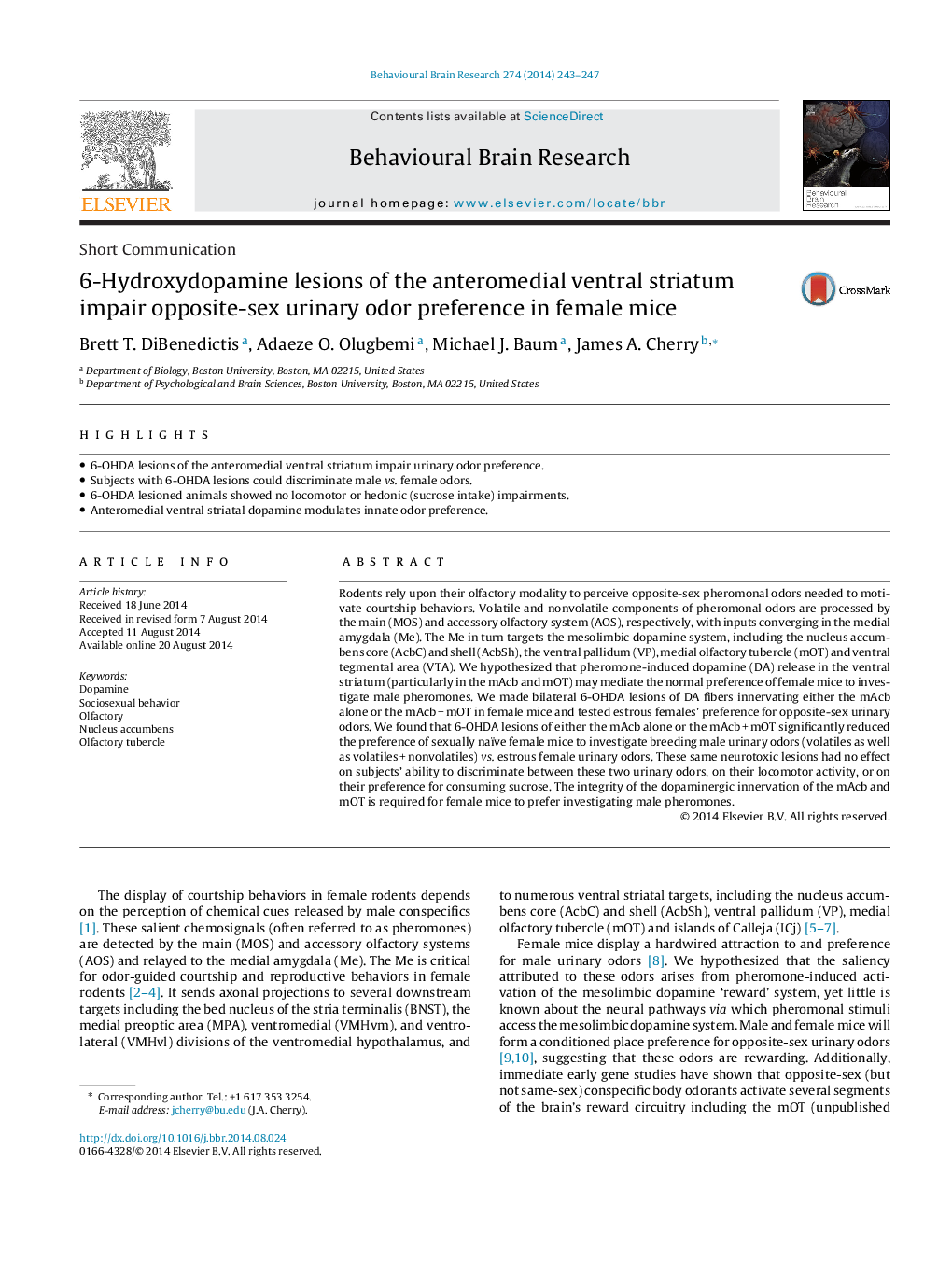| کد مقاله | کد نشریه | سال انتشار | مقاله انگلیسی | نسخه تمام متن |
|---|---|---|---|---|
| 6257799 | 1612958 | 2014 | 5 صفحه PDF | دانلود رایگان |

- 6-OHDA lesions of the anteromedial ventral striatum impair urinary odor preference.
- Subjects with 6-OHDA lesions could discriminate male vs. female odors.
- 6-OHDA lesioned animals showed no locomotor or hedonic (sucrose intake) impairments.
- Anteromedial ventral striatal dopamine modulates innate odor preference.
Rodents rely upon their olfactory modality to perceive opposite-sex pheromonal odors needed to motivate courtship behaviors. Volatile and nonvolatile components of pheromonal odors are processed by the main (MOS) and accessory olfactory system (AOS), respectively, with inputs converging in the medial amygdala (Me). The Me in turn targets the mesolimbic dopamine system, including the nucleus accumbens core (AcbC) and shell (AcbSh), the ventral pallidum (VP), medial olfactory tubercle (mOT) and ventral tegmental area (VTA). We hypothesized that pheromone-induced dopamine (DA) release in the ventral striatum (particularly in the mAcb and mOT) may mediate the normal preference of female mice to investigate male pheromones. We made bilateral 6-OHDA lesions of DA fibers innervating either the mAcb alone or the mAcb + mOT in female mice and tested estrous females' preference for opposite-sex urinary odors. We found that 6-OHDA lesions of either the mAcb alone or the mAcb + mOT significantly reduced the preference of sexually naïve female mice to investigate breeding male urinary odors (volatiles as well as volatiles + nonvolatiles) vs. estrous female urinary odors. These same neurotoxic lesions had no effect on subjects' ability to discriminate between these two urinary odors, on their locomotor activity, or on their preference for consuming sucrose. The integrity of the dopaminergic innervation of the mAcb and mOT is required for female mice to prefer investigating male pheromones.
Journal: Behavioural Brain Research - Volume 274, 1 November 2014, Pages 243-247